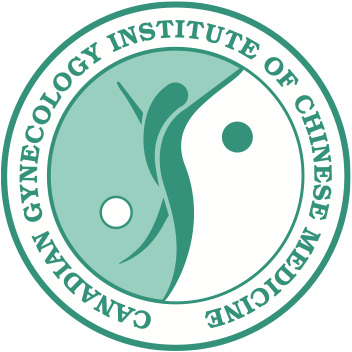Is acupuncture safe? is a frequently asked question. Yes, absolutely, with a properly trained practitioner. Even still, there are some risks. The following outlines some of the risks and what properly trained practitioners do to minimize these risks.
Fainting
Some people find they are sensitive to the needles, which can cause a vasovagal response, which is the simultaneous excitation of the parasympathetic nervous system and the withdrawal of the sympathetic nervous system. Most often, these types of people are sensitive to all types of needling, even hypodermic needles will have the same effect. If this happens to you, please tell your practitioner if they don’t ask first.
Acupuncture is a different sensation altogether, and this type of response can happen to anyone. Symptoms include feelings of lightheadedness, nausea, increase or decrease in body temperature, sweating, tunnel vision, confusion, the feeling of fainting, etc. If you have these feelings in an acupuncture treatment, tell your practitioner. All of the needles should be removed immediately, the patient should remain in a prone position, and water should be given.
To decrease the risk of fainting, patients should always wear comfortable clothing, make sure to have a light meal before a session – being hungry can cause this response, and be well hydrated.
Bruising
While practitioners are well educated as to the anatomy and location of blood vessels, every person is unique and occasionally a point will bleed when the needle is removed. If you are prone to bleeding and bruising, please let your practitioner know if they don’t ask. A small amount of bleeding (a drop) is actually quite normal and indicates a release of heat and toxins from the body. More often than not, this does not leave a bruise, but if there are two to three drops of blood a bruise may form. I generally know when a bruise will form and let you know if this will happen.
Less often there will be a hematoma – a bruise with a bump. This is the accumulation of blood in one area. This more often than not will leave a bruise. The best way to get rid of this bump is to apply pressure and massage the area to dissipate the accumulation, which I will generally do for you before you leave.
Is Acupuncture Safe? – Stuck Needle
Every once in a while a needle gets stuck within the skin. This occurrence is common enough that practitioners are taught how to remove them. Sometimes the needles needs a little bit of extra time and the practitioner will remove all of the other needles first and then remove the stuck needle last. A needle can become stuck if there is too much manipulation, usually in one direction, and the muscle fibers wind around the needle. In this case, twisting the needle the opposite way will loosen the fibers and the needle comes out. Otherwise, massaging around the needle can help, and if all else fails another needle is inserted just next to the stuck one and both will release.
Is Acupuncture Safe? – Prolonged Sensation
For the most part, any needling sensation will subside within 10 seconds of being left alone. Occasionally, the sensation lasts throughout the treatment and as long as the sensation is within your tolerance, this is a positive thing. Less often there is the sensation of a needle after the session is over. This usually dissipates on its own quite quickly but rarely lasts up to a couple of days. This is all normal, but if you find the sensation continues or if it is bothersome, please contacts your practitioner.
Is Acupuncture Safe? – Pneumothorax
This is the puncturing of the lung with a needle. According The Canadian Lung Association, pneumothorax can present with such symptoms as the sudden onset of chest pain and shortness of breath. If you suspect pneumothorax it is imperative you go to emergency room right away. Treatment includes watching and waiting for the excess air to be absorbed out through the blood stream, removal of the air via a tube, or surgery, though surgery is usually only done in cases of recurrent pneumothorax.
Practitioners are taught how to avoid pneumothorax through some very simple preventative measures. The first: knowing anatomy. The second: any needle inserted around the thorax – the area protected by the rib cage – is needled at a 10˚-45˚ angle, not a 90˚ angle. Pneumothorax is extremely easy to avoid.
Is Acupuncture Safe? – Cardiac Tamponade
This is the puncturing of the heart with the needle. Symptoms include anxiety, restlessness, chest pain, heart palpitations, difficulty or discomfort with breathing, dizziness, or drowsiness. If you suspect cardiac tamponade, go to an emergency room immediately.
Again, acupuncture practitioners are taught very simple preventative measures, which are the same as those for pneumothorax. Extra care needs to be taken when needling the sternum, where the needles should be inserted at no larger than a 10˚ angle, or obliquely. Cardiac tamponade is extremely easy to avoid.
Is Acupuncture Safe? – Infectious Disease
Blood-borne diseases such as Hepatitis and HIV are not transmitted through acupuncture with the use of safe practices and clean needle techniques. This includes using pre-sterilized, one-time-use-only needles that are properly disposed of into a biohazard sharps container after use. This means that sterilized needles are used, and that they are never re-sterilized or re-used on different patients. The cost of acupuncture needles is not high enough to ever warrant any practitioner to re-use a needle and Health Canada makes the proper disposal of needles easy, safe and accessible. There is no need for any practitioner to practice in an unsafe manner.
Otherwise, all registered acupuncturists and practitioners are educated in proper hand washing and clinic safety protocols.
Acupuncture is a safe and effective practice that has very few unwarranted side effects with properly trained practitioners. If you have any questions or concerns, please feel free to contact us.
Caroline Prodoehl, R.Ac, R.TCMP



